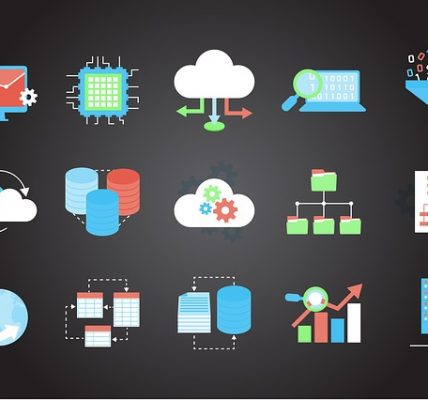
Doing a historical analysis, we can see that unlike the other technology specialties, any major trends in terms of database management tend to form in many years. There are of course some trends which are moving faster, but most of them move slow and steady. Say, for example, the upcoming of data lakes and Hadoop shot forward so quickly, but to stall until the users discovered a fix for the problems which require backtracking for fixing. The slowest, but steadily growing trend now is the movement towards the cloud.
The other trends in database management are more localized and slower as the evolution of the data semantics, going beyond metadata and data cataloging. Considering another common example in terms of big data, which churns up anew on the onslaught of the upcoming of Internet of Things. In this article, we are attempting to look at some such database management trends for the year 2019, which are obviously slow, but significant.
2019 database trends
A halt in Hadoop hype
One of the major surprises in the first quarter of 2019 is how quickly the major hype around Hadoop got halted. It came out almost from nowhere back in 2013 and got significantly into production at a share of about one-fifth in the data warehousing environments by the year 2016. However, this fast trend of Hadoop adoption slowed down in the latter half of 2017, and we can see it almost halted fully during 2018.
We need to consider the fact that Hadoop had almost saturated in terms of progressive warehousing programs where it was commonly used. On the other hand, the users also grew dissatisfied with the immature effect of Hadoop in terms of relational functions, platform maintenance, managing metadata, etc. Adding to these, the higher cost of the on-premise clusters also made Hadoop an unfriendly choice to many. There is no doubt that Hadoop is here to stay; however, it requires extensive modernization to overcome the shortfalls, which is intensively happening now.
Quick adoption of data lakes
As we had seen above, somewhat identical to the quick adoption of Hadoop, data lakes also came into picture back in 2016 and quickly adopted by the technology experts. Hadoop is a clear-cut data management platform; however, a data lake is a concept or a design pattern to manage data in light of big data administration.
Once the concept got introduced, many of the Hadoop users also tried retrofitting the method of data lakes into their Hadoop implementations in an effort to better administer Hadoop data for more benefit. As a result of it, we can see that most of the data lakes are on Hadoop now. With Hadoop, the data lake administrators may feel an increasing need for the conventional relational techniques in terms of big data management, which is the reason why now there is an increasing trend towards the formation of relational data lakes, which are deployed on the relational databases.
Improved metadata management
There is no doubt that metadata management still remains the most powerful enabler of any crucial data-driven activities in business ranging from analytics to finance or operations. In order to keep in pace with the challenging and changing market requirements and to lever the best from new technological advantages, the metadata management of modern times include tools which allow automation with machine learning and more intuitive data scanning methods. This will help reduce the complexity of data structures and also enable the source-to-target data mapping effectively.
Similarly, improved metadata management will also support the advanced cloud-based applications, virtualization methodologies, and data platforms all across on-premise, cloud, and database-as-a-service type of applications. No doubt about the fact that metadata still remains the most popular approach to the data semantics, but as RemoteDBA.com reiterates, we can expect metadata to collaborate to a brand-new approach of data cataloging soon.
Big data becomes mainstream
When we first heard the terms “big data” back in the 1990s, it was primarily referring to the mass volume of data flowing in and out of the websites. In fact, the data was not really big at those times, and the concept was also new in terms of the existing data structures. The conventional data structures lacked in a lot of aspects like low latency, which limited the innovative business applications they can enable as e-com to analytics.
However, the size and opportunities offered by big data paved way to a brand-new generation of data platforms, with in-built analytical and data-driven business management tools and practices. In fact, it took many years to figure out all these, but now big data and the platforms it enables put forth a huge opportunity in terms of insightful data management. In other words, we can say that big data has now grown to the mainstream. Many organizations still tend to call it as just “data” and try to integrate this with other information assets. Now, we can expect the next big wave of big data coming in the realm of IoT in the next few years.
Information Technology gets ‘cloud’ed
On considering the most inevitable and innovative trend in IT, it is not just the trends in data management, but it also the moving of data and applications into the cloud. We can anticipate a day not far from now when almost all applications and data will be running on cloud than on-premise. Many studies have shown that businesses are ranging from start-ups to multination corporate all acquire SaaS applications by replacing the on-premises applications one by one.
There is a huge volume of data lately migrated to cloud. Many organizations have also managed a cloud-first approach, not only for its cost-effectiveness but also for the enhanced security and lesser risk in terms of data loss or breach. This leads to the use of more and more SaaS-based applications. With more SaaS applications and cloud systems coming into the enterprise management suite, data management becomes a hybrid affair across on-premise and multiple cloud systems.
In fact, the conventional practices in database management and on-premises database systems are not going anywhere any time soon. Many of the enterprises still follow the same data management practices but tend to leverage the advantages or advanced database management practices too. Putting it all together, we can see that the near future of data management tends to more hybrid with the cloud part growing aggressively over time.










![Watch Video Now on xiaohongshu.com [以色列Elevatione perfectio X美容仪 perfectio X 全新仪器黑科技了解下]](https://www.techburgeon.com/wp-content/uploads/2019/07/perfectiox-singapore-150x150.jpg)
